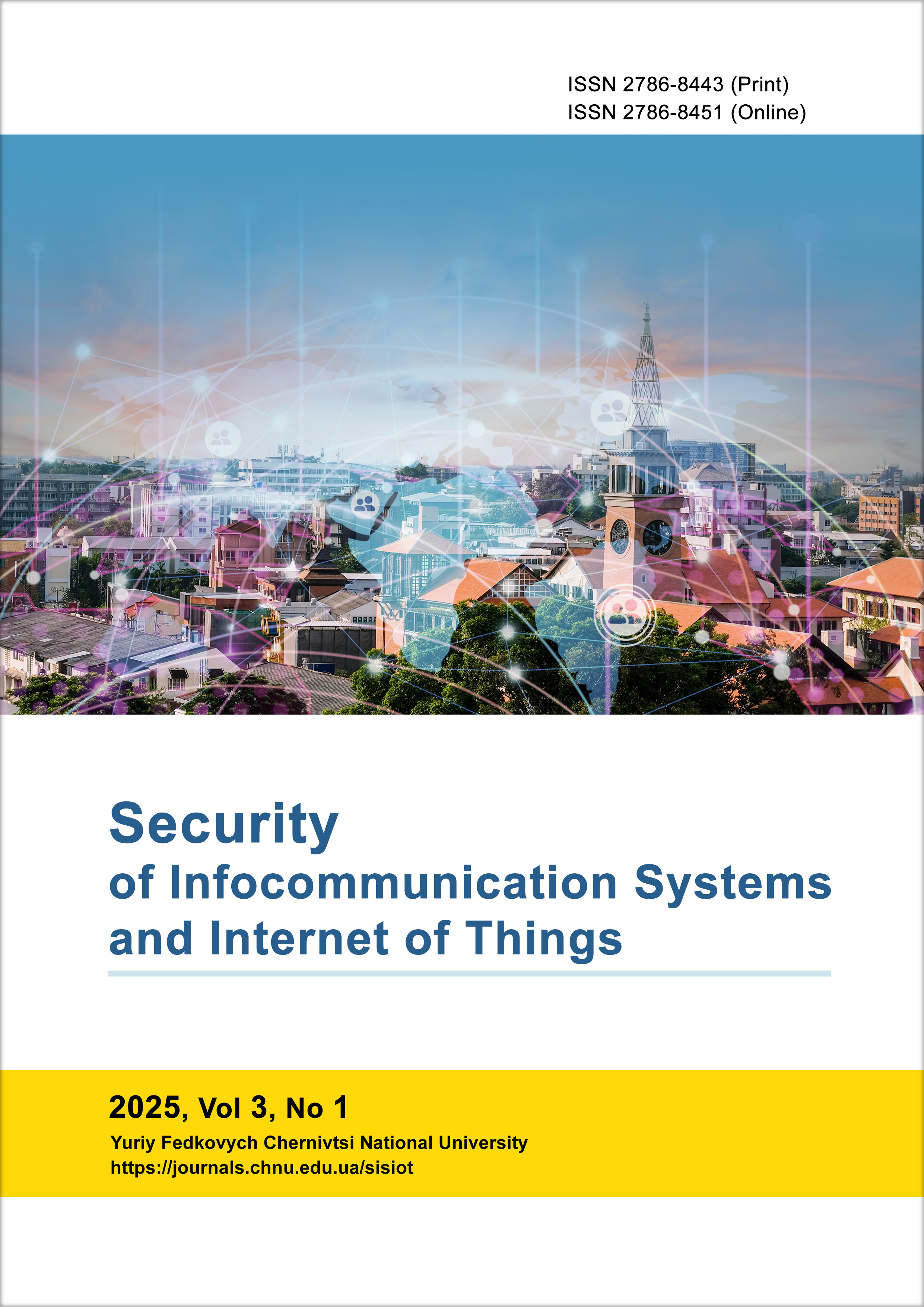Methodology for Using Metadata in Machine Learning to Enhance the Security of State Information Systems
DOI:
https://doi.org/10.31861/sisiot2025.1.01001Keywords:
metadata, machine learning, neural networks, cybersecurity, state information systemsAbstract
The article conducts an in-depth examination of a comprehensive methodology for the integration of metadata into neural networks, aiming to enhance the security frameworks of state information systems. Metadata, encompassing a wide range of contextual information such as timestamps, geolocation data, and user behavioral characteristics, plays a pivotal role in strengthening the capacity to detect and mitigate potential cyber threats. This approach leverages the advanced capabilities of neural networks and state-of-the-art computational technologies, facilitating the effective utilization of metadata across critical domains, including public administration, healthcare, transportation, and cybersecurity. The integration of such metadata is of paramount importance in sectors where the precision and speed of threat detection are essential for averting catastrophic consequences. The proposed methodology underscores the embedding of metadata directly into neural network architectures to enable the detailed analysis of anomalous activities within information systems. This integration significantly enhances the precision, adaptability, and efficiency of cybersecurity measures. The classification and categorization of metadata within neural networks provide a robust foundation for deep analytical capabilities and facilitate rapid adaptation to emerging threats and shifting environmental conditions. Moreover, the research delves into the development and application of innovative algorithms capable of processing and managing extensive volumes of data. These algorithms are designed to ensure scalability, maintain robustness, and enhance the operational resilience of cybersecurity frameworks. Furthermore, the article explores the practical implications and real-world implementation of these algorithms, illustrating their applicability to large-scale government systems and critical infrastructures. By integrating metadata into neural networks, the study demonstrates how these systems can achieve heightened levels of protection against cyber threats. Through detailed case studies and practical applications, the research highlights the transformative potential of metadata-driven neural networks in bolstering the security of critical infrastructures. The findings emphasize the necessity of data-driven decision-making in modern cybersecurity paradigms and outline the prospective expansion of the proposed model to address future challenges. The model’s ability to improve resilience against evolving threats and enhance real-time response capabilities within dynamic environments is particularly noteworthy. The study concludes by showcasing the potential of this methodology to revolutionize cybersecurity practices, offering a scalable and adaptable solution to mitigate risks and ensure the integrity of state information systems.
Downloads
References
O. M. Volokhin, Cataloging Digital Internet Resources: Dublin Core Metadata. Kyiv: Naukova Dumka, 2017.
V. I. Guzhov, Standards and Specifications for Developing Electronic Educational Resources, Part 1: Metadata and Packaging Systems. Kharkiv: Tekhnosfera, 2015.
NGTU, Metadata and Packaging Systems. Dnipro: Promin, 2009.
D. Marco and M. Jennings, Universal Metadata Models. Wiley Publishing, 2004.
R. Riley, J. Tierney, and L. Stewart, Meta-analysis of Individual Participant Data: A Practical Guide for Medical Research. Wiley, 2021.
M. Amerika, Metadata: Digital Poetics. Leonardo Books, 2007.
M. Barkl, Composition: Pure Data as a Meta-compositional Tool. Lambert Academic Publishing, 2009.
D. Bohning, S. Rattanasiri, and R. Kuhnert, Meta-analysis of Binary Data Using Profile Likelihood. Chapman and Hall/CRC, 2008.
M. S. Brown, Data Mining for Beginners. Wiley, 2014.
D. Marco, Building and Managing the Metadata Repository: A Full Life-cycle Guide. Wiley, 2000.
S. Simske, Meta-Analytics: Consensus Approaches and Systematic Frameworks for Data Analysis. Elsevier, 2019.
G. Rafferty, Time Series Forecasting with Prophet: Build, Improve, and Optimize Forecasting Models. Packt Publishing, 2023.
R. G. Hahn, Homeopathy: Meta-analysis of Combined Clinical Data. Karger, 2013.
C. Türker, H. Balsters, B. de Brock, and S. Conrad, Evolution of Database Schemas and Meta-modelling: 9th International Conference FoMLaDO/DEMM. Springer-Verlag Berlin Heidelberg, 2001. [Online]. Available: https://1drv.ms/f/s!AnK5LqAxhfMGhsdATAFVa_Cdpnn1XA. [Accessed: Dec. 16, 2024].
Published
Issue
Section
License
Copyright (c) 2025 Security of Infocommunication Systems and Internet of Things

This work is licensed under a Creative Commons Attribution 4.0 International License.









